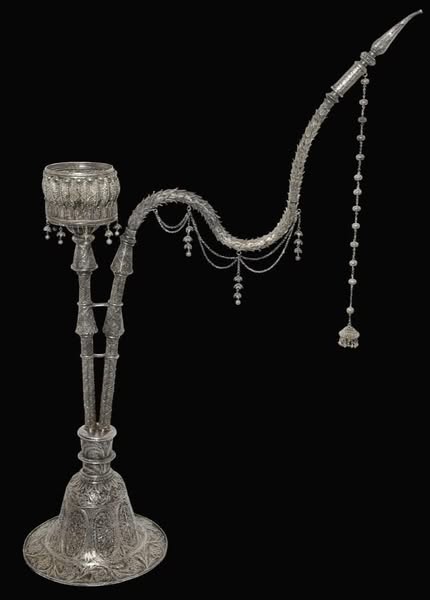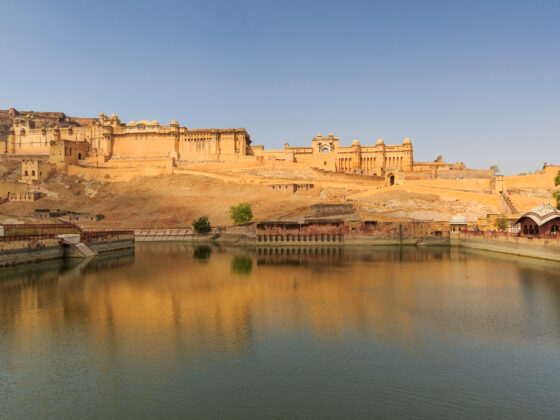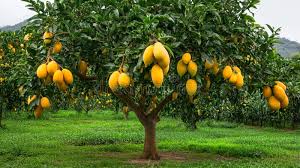The Exquisite Silver Hukkah: A Rare Antique

Introduction
The Hukkah (हुक्का) holds a special place in Indian history, especially as a symbol of royalty and social tradition. Among the most exquisite examples of this cultural artifact is a rare antique silver Hukkah, dating back to the 18th or 19th century, crafted in Deccan or Odisha, India. This masterpiece of craftsmanship, entirely made of silver, reflects extraordinary artistry, luxury, and cultural richness.
From intricate engravings to unparalleled metalwork, this antique piece is a testament to India’s glorious past and skilled artisanship. Therefore, let’s explore its history, craftsmanship, and legacy.
The Cultural and Historical Significance of Hukkah in India
The use of Hukkah (also known as Hookah or Shisha) dates back centuries, deeply embedded in Indian, Persian, and Middle Eastern traditions. In India, the practice of smoking flavored tobacco through a Hukkah became a status symbol, particularly among royalty, noblemen, and affluent traders.
By the 17th century, Mughal emperors, Rajput rulers, and the elite of Deccan and Odisha widely adopted the Hukkah. Notably, it was often used during courtly gatherings, diplomatic meetings, and social ceremonies. As time progressed, the introduction of silver into Hukkah design marked an era of opulence and sophistication, as silver signified wealth, power, and artistic excellence.
The Masterpiece Craftsmanship of This Silver Hukkah
This 18th-19th century silver Hukkah stands out due to its extraordinary craftsmanship and intricate detailing.
- Material & Composition:
- The entire structure is crafted in pure silver, showcasing the metal’s durability and luster.
- Since silver was preferred by Indian aristocrats due to its antimicrobial properties and symbolic value, it became a popular choice.
- Exquisite Design Elements:
- This Hukkah features elaborate floral motifs, geometric patterns, and filigree work, characteristic of Deccan and Odisha’s artisan traditions.
- Additionally, hand-engraved depictions of courtly life and natural elements make it an artistic marvel.
- The intricate jali (pierced) work on various sections of the Hukkah allows for a stunning interplay of light and shadow.
- Structural Components:
- Base: Often wide and stable, adorned with detailed repoussé designs.
- Neck and Stem: Delicately engraved with calligraphy or miniature figures reflecting the era’s artistic preferences.
- Bowl and Hose: Silver-plated with exquisite embellishments, ensuring both functionality and aesthetic appeal.
The exceptional craftsmanship of this Deccan or Odisha silver Hukkah showcases the unparalleled skill of artisans who combined Persian influences with Indian heritage.

Deccan and Odisha: Centers of Artistic Excellence
The Deccan region and Odisha were known for their rich artistic heritage and superior metal craftsmanship.
- Deccan (Southern India):
- The Deccan Sultanates (16th-18th century) were patrons of elaborate silverware, including ceremonial objects like Hukkahs.
- Moreover, their designs combined Persian, Turkish, and Indian motifs, creating a unique blend of styles.
- Odisha (Eastern India):
- Odisha’s artisans were renowned for their filigree silverwork, which is still admired worldwide.
- Furthermore, the state’s deep connection to temple arts and royal traditions influenced its Hukkah designs, featuring intricate mythological and nature-inspired engravings.
Given these influences, a silver Hukkah from Deccan or Odisha represents a fusion of Mughal elegance and regional artistic mastery.
Why This Silver Hukkah is a Rare Collector’s Item
Owning an antique silver Hukkah from the 18th-19th century is like possessing a piece of history. Here’s what makes it a highly valuable collectible:
- Authenticity & Age: Verified as an original from the late Mughal or early British colonial period.
- Material Rarity: Pure silver antiques with intact engravings are increasingly rare.
- Artistic Detailing: The fine craftsmanship reflects a golden era of Indian artistry.
- Cultural Importance: Such Hukkahs were used by royalty, making them significant heirlooms.
- Investment Value: Genuine antique silverware has great value in global art and heritage markets.
For this reason, collectors, museums, and antique enthusiasts seek such unique artifacts, appreciating their historical and artistic significance.
Preservation and Maintenance of Antique Silver Hukkahs
Given their age and material, preserving antique silver Hukkahs requires careful attention:
- Regular Cleaning: Use a soft cloth and silver polish to prevent tarnishing.
- Avoid Harsh Chemicals: Since chemicals can damage delicate engravings and patina, gentle cleaning methods are recommended.
- Proper Storage: Keep it in a dry, climate-controlled environment to prevent corrosion.
- Minimal Handling: Excessive handling can cause wear and tear on fine details.
By following these steps, collectors can maintain the integrity and brilliance of this rare masterpiece.
Conclusion
The rare antique silver Hukkah from 18th-19th century Deccan or Odisha is a true masterpiece of craftsmanship, culture, and luxury. Its intricate detailing, historical significance, and regal appeal make it an exceptional artifact. Whether admired for its artistic beauty, collected for its historical value, or preserved as a family heirloom, this silver Hukkah remains a symbol of India’s opulent past.
For connoisseurs of antiques and art lovers alike, this extraordinary Hukkah stands as an enduring representation of heritage and artistic finesse, telling a timeless story of India’s royal traditions and master craftsmanship.





